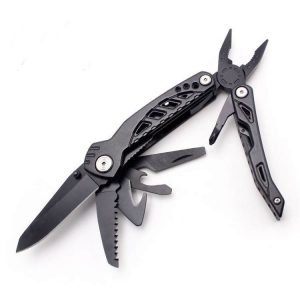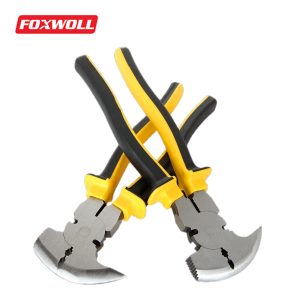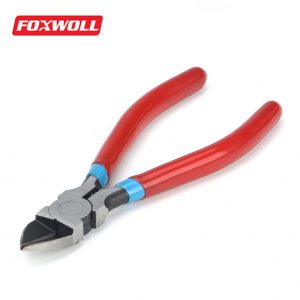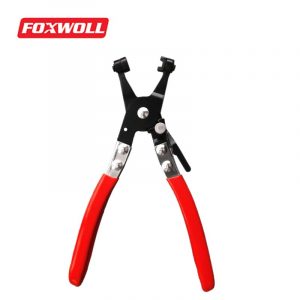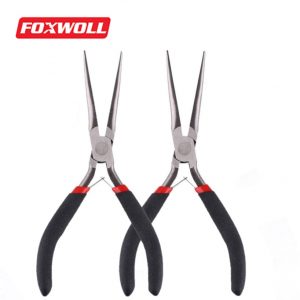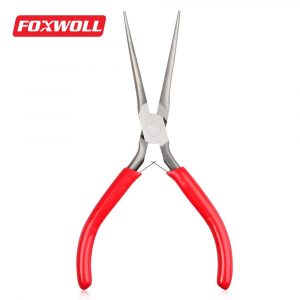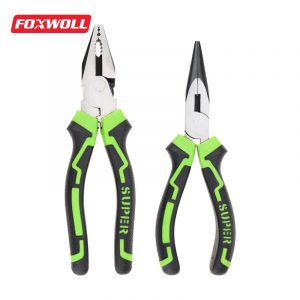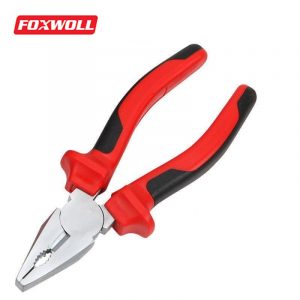Plier Manufacturers
Induction hardened cutting edges stay sharper and longer.
Anti-slip handle design helps ensure a safe and secure grip.
Various sizes, styles, and combinations are available.
All products meet or exceed the national quality inspection certification.
Provide One-Stop Pliers Solution
A wide range of options, a wealth of choices, designed for different industries.
Can't find the pliers you need? Contact our Product Advisor for the latest catalog
FOXWOLL, Your Trusted Plier Manufacturers
We are a professional pliers manufacturer trusted by different businesses to always deliver our products. We are committed to providing quality combination tool set to all our customers. Our pliers are designed by the best people in the business to meet your needs and provide quality service.
Material
We offer pliers products made of different materials. General pliers, it is made of high-quality carbon structural steel with 0.45% carbon content. High-quality and heavy-duty pliers are made of high carbon content and/or alloying elements such as chromium or vanadium. You can customize materials according to the needs of your business.
Head
We know that different types of pliers have different shaped heads. Common types of pliers include wire strippers, wire pliers, nozzle pliers, needle nose pliers, curved nose pliers, flat nose pliers, water pump pliers, etc. FOXWOLL can customize special plier heads for you according to your business needs.
Handle
Generally, the anti-slip design is adopted to effectively ensure that the user can hold it safely and effectively during use, providing a comfortable and reliable use experience.
Packaging
Packaging represents the external image of the brand and is the most direct feeling consumers have of the brand. We provide a variety of different types of outer packaging to choose from.
Logo
FOXWOLL provides logo customization services on products to increase product recognition.
Why Choose FOXWOLL As Your Plier Supplier
Price advantage
The goal of FOXWOLL is to help customers create greater value and establish a good brand image. In addition, since we are the source manufacturer, we supply products directly to you. So we have a huge advantage in price.
Wide range of products
We provide you with a one-stop pliers solution. You can get the pliers you want at FOXWOLL. We have a wide range of products and options.
Strong supply chain
We have been in the tool industry for 16 years, and we have strong resource integration capabilities and strong supply chain support. We can assure you of our availability and product quality.
Strict quality control
As a professional production factory, we strictly control product quality. We have specialized quality inspection departments and professionals who conduct inspections in strict accordance with quality inspection standards and specifications.
Browse all FOXWOLL Tools and Hardware Products

Pliers FAQ Guide
1. What is a pair of pliers called?
2. What are the most common types of pliers?
3. What are pliers for?
4. How do pliers work?
5. What steel are the pliers made of?
6. What are the common use of pliers?
7. What pliers are commonly used in electrical applications?
8. What is the use of pliers in pipes?
9. What is the different types of plier?
10. What is the difference between long nose pliers and combination pliers?
11. What are the parts of the pliers?
12. How to maintain the pliers?
13. How to work with FOXWOLL?
14. If you are an e-commerce operator, what can FOXWOLL do for you?
15. How to check the quality of FOXWOLL products?
1. What is a pair of pliers called?
There are many different types of pliers, but the most common type is the hand tool. These pliers are designed to be held in hand and used to grip, twist, or cut objects. There are also electrician’s pliers, specially designed for electrical work, and pipe wrench pliers, designed for plumbing.
The word “pliers” is a generic term that can describe any gripping tool. However, in most cases, it refers to the hand tool. Pliers come in many different sizes and shapes, but they all have one thing in common: they have two jaws connected at the pivot point. This allows the user to grip objects with one hand while using the other hand to twist or cut them.
Pliers are essential for many types of work, including carpentry, plumbing, and electrical work. They can be used to grip nails so they can be pulled out of wood or loosen nuts and bolts. Pliers are also often used to cut wires or strip electrical wires’ insulation.
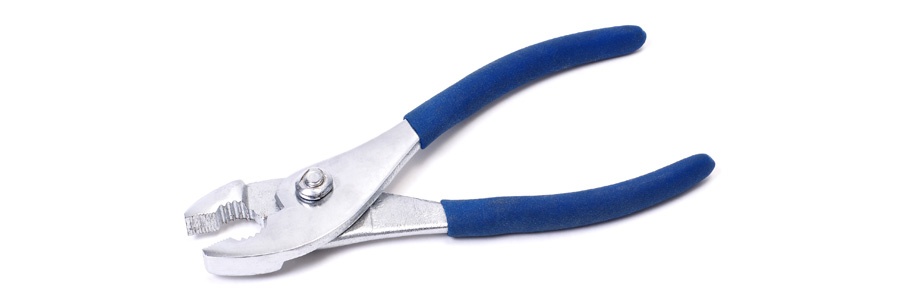
2. What are the most common types of pliers?
Needle nose pliers are one of the most common types of pliers. They are very versatile and can be used for a variety of tasks, including:
·Cutting wire
·Stripping wire
·Bending wire
·Picking up small objects
Needle nose pliers usually have a long, thin nose that can reach into tight spaces. They also have a cutting blade built into the jaws, which makes them ideal for cutting wire.
If you are looking for a versatile pair of pliers that can handle various tasks, then needle nose pliers are a good choice.
3. What are pliers for?
Pliers are versatile tools that can be used for various tasks, including gripping, twisting, bending, and cutting wire. There are many different pliers available on the market, so it’s essential to choose the right pair for the job. Here is a brief guide to the most common types of pliers and their uses:
Needle nose pliers: These have long, slim jaws that taper to a fine point, making them ideal for working in tight spaces or gripping small objects.
Slip joint pliers: These pliers have a joint that allows the jaws to open and close, making them ideal for gripping and twisting objects of different sizes.
Wire cutters: These pliers are designed specifically for cutting wire and have blades that can be sharpened as needed.
Lineman’s pliers: These have a built-in wire cutter and stripper, making them ideal for electricians or anyone working with the wiring.
Diagonal cutters: These pliers have angled jaws, making them perfect for cutting wire in tight spaces.
No matter what type of pliers you need, be sure to choose a quality pair that is comfortable to use and that will last for many years.
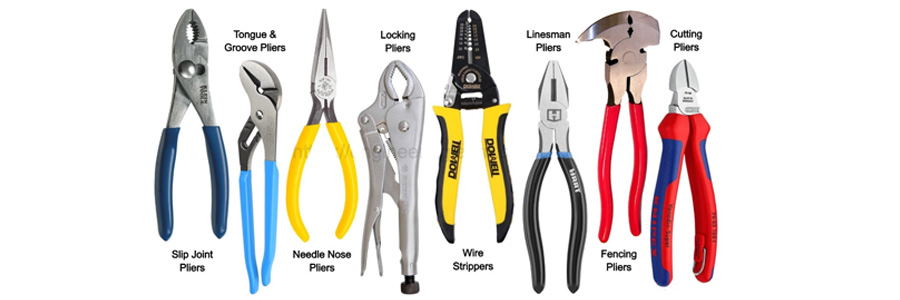
4. How do pliers work?
Pliers are one of the most versatile tools in any workshop, and understanding how they work is essential to getting the most out of them. At their most basic, pliers are two metal jaws that open and close when you squeeze or release the handles. This simple design gives them various uses, from gripping and twisting wires to bending and cutting metal.
Most pliers have a joint in the middle that allows the jaws to open and close, usually controlled by a spring. When you release the handles, the jaws will snap shut automatically. The pressure the spring applies can be adjusted, allowing you to use the pliers for different tasks.
The pliers’ jaws can be smooth or serrated, affecting how they grip objects. Soft jaws are best for gripping round objects, while serrated jaws are better for holding onto flat surfaces. Some pliers have both jaws, giving them even more versatility.
Pliers are a handy tool, and understanding how they work is the key to getting the most out of them. With a bit of practice, you’ll be able to use them for all sorts of tasks around the workshop.
5. What steel are the pliers made of?
Generally, pliers are made of carbon steel. This is because carbon steel is a solid and durable metal that can withstand a lot of wear and tear. Carbon steel is also relatively inexpensive, which helps decrease the cost of pliers. Some pliers are made of stainless steel, but these tend to be more expensive than carbon steel options.
The pliers are made of carbon structural steel with a carbon content of 0.45%. This type of steel is known for its toughness and strength, which is why it’s commonly used in tools and equipment.
6. What are the common use of pliers?
The most common use for pliers is gripping and holding objects. Pliers can be used to grip various entities, including nails, screws, wires, pipes, and bolts. In addition to griping and holding things, pliers can also be used to cut wire and bend metals.
Various types of pliers are available on the market, including needle nose pliers, slip-joint pliers, Lineman’s pliers, locking pliers, and smooth-jawed pliers. Each type of plier is designed for a specific task or type of material.
7. What pliers are commonly used in electrical applications?
Electrical pliers are a type of hand tool used for working with wiring and other electrical applications. The most common electrical pliers are needle-nose pliers, Lineman’s pliers, and wire strippers.
Needle-nose pliers are the most commonly used type of electrical pliers. They have a long, slender nose that is useful for reaching into small spaces and making precise adjustments.
Lineman pliers are another common type of electrical pliers. They have a shorter nose than needle-nose pliers but are much stronger and more durable. Lineman’s pliers are typically used for heavy-duty jobs such as cutting through thick wires.
Wire strippers are electrical pliers that strip the insulation off electrical wires. Wire strippers have a variety of different blade sizes so that they can strip different sizes of wire.
Electrical pliers are essential for any electrician or anyone working with electrical wiring. Various types of electrical pliers are available, each designed for a specific task. When choosing the right kind of electrical plier for the job, it is essential to consider the size and shape of the nose, the strength of the jaws, and the blade type.
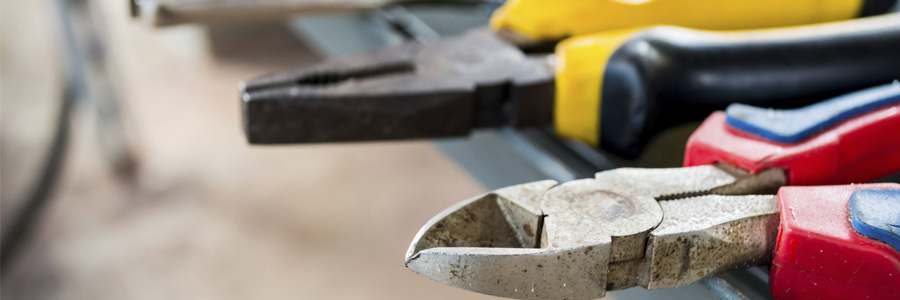
8. What is the use of pliers in pipes?
The use of pliers in pipes is to remove fittings, valves, or other objects that are stuck in the line. The pliers can grip the object, and then the user can twist or pull to remove it from the pipe. The use of pliers in pipes is to help tighten or loosen the fittings on the pipe. It makes the process easier and faster than if you were to use your hands alone.
9. What is the different types of plier?
There are many different types of pliers, each designed for specific tasks. Some of the most common types include:
Needle-nose pliers
Needle-nose pliers are one of the most versatile tools in any toolbox. They can be used for various tasks, including small gripping objects, bending wire, and precise cuts.
If you’re looking for a good pair of needle-nose pliers, choosing a quality pair that will last is essential. There are many different brands and styles of needle-nose pliers on the market, so it’s necessary to do your research before making a purchase.
Once you’ve found a pair of needle-nose pliers that you like, be sure to take care of them so they’ll last for years to come.
Slip-joint pliers
Slip-joint pliers are one of the most common in households and workshops. They have a simple, two-part design that allows them to be adjusted to fit various-sized objects. The jaws of slip-joint pliers can also be opened wide or closed tight, depending on the user’s needs.
One of the most convenient features of slip-joint pliers is that they can be easily adjusted to fit various-sized objects. This makes them ideal for tasks such as gripping and holding onto nails, screws, and other small things. Slip-joint pliers are also often used for twisting and turning objects, such as when tightening a bolt or screw.
While slip-joint pliers are very versatile, they do have some limitations. One of the most significant drawbacks is that they can be challenging to use on larger objects due to their small size.
Lineman’s pliers
Lineman’s pliers are pliers used by electricians and linemen to grip and cut wire. The pliers’ jaws are serrated, and the handles are usually insulated to protect the user from electrical shock. Lineman’s pliers are also called side-cutters or diagonal-cutters.
Lineman’s pliers are one of the essential tools used by electricians and linemen. They are used to grip and cut wire, as well as to strip insulation from the wire. The serrated jaws of the pliers allow them to grip wire securely, while the insulated handles protect the user from electrical shock.
Wire Strippers
If you’re working with electrical wiring, you will need a good pair of wire strippers. Wire strippers are a type of pliers that are specifically designed to strip the insulation off of electrical wires. This is important because it allows you to safely expose the bare wire so that you can make the necessary connections.
There are a lot of different wire strippers on the market, so it’s essential to choose the right pair for the job.
Water pump pliers
A water pump plier is used to grip and turn various objects, including pipes, tubing, and valves. They are also sometimes called pipe wrench pliers or Bessey pliers.
Water pump pliers are one of the most versatile tools in a plumber’s toolkit. They can grip and turn various objects, including pipes, tubing, and valves. They are also sometimes called pipe wrench pliers or Bessey pliers.
Water pump pliers come in various sizes and styles to suit different applications. The most common type is the slip-joint water pump pliers, which have jaws that open and close to allow them to grip a variety of different sizes of objects.
10. What is the difference between long nose pliers and combination pliers?
The main difference between a long nose and combination pliers is the length of the jaws. Long nose pliers have longer jaws that can reach into tight spaces, while combination pliers have shorter jaws that are better suited for gripping and cutting wire. Both types of pliers are helpful for various tasks, so it really depends on the specific project you’re working on and which type of pliers you’ll need.
Assuming you want me to continue writing about the difference between long nose pliers and combination pliers:
Long nose pliers are best for tasks that require a lot of precision, such as bending wire or removing small objects from tight spaces. The longer jaws of these pliers give you more control over the tool, making it easier to achieve the desired results.
On the other hand, combined pliers are better suited for tasks that involve cutting a wire or gripping larger objects. The shorter jaws of these pliers provide more leverage, making it easier to cut through more rigid materials.
So, which type of pliers should you use for your next project? It depends on the specific task at hand. Long nose pliers are a good option if you need to be precise and have more control over the tool. Combining pliers might be a better choice if you need more power and leverage.
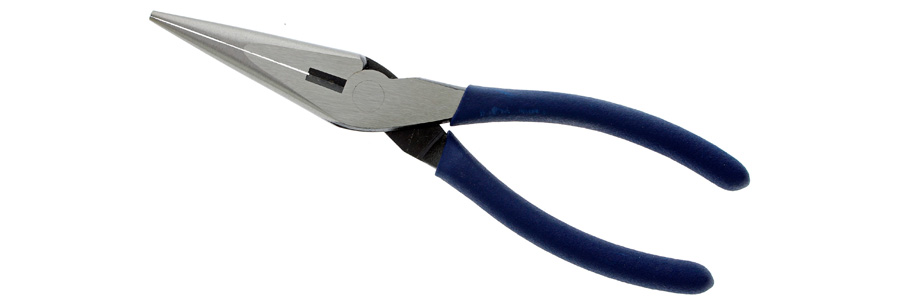
11. What are the parts of the pliers?
The tip of the pliers is used for gripping and holding onto objects. The pipe grip is used for grabbing round things such as pipes. The knives are typically used to cut wires and cables. The jaws are the working end of the pliers used for gripping. The pivot point (or fulcrum) is where the two handles meet at the hinge, allowing the handle to open and close. This is what allows the pliers to function.
12. How to maintain the pliers?
Keep a few key things in mind when maintaining your pliers. First, keeping them clean and free of dirt or grime is essential. This can build up over time and affect the performance of your pliers. You can rinse them off with water and dry them after each use.
It’s also important to oil your pliers periodically. This will help keep them rust-free and in good condition. Just apply a light layer of oil on all surfaces, including the joint where the two handles meet. You can then wipe away any excess oil with a clean cloth.
Finally, be sure to store your pliers properly when not in use.
13. How to work with FOXWOLL?
There are two possibilities to work with FOXWOLL. The finished order needs to confirm the contract, make payment and get the product delivered after factory production. Wile for customization, before confirming the contract step need to send the design, verify the sample, and proceed with the finished product.
14. If you are an e-commerce operator, what can FOXWOLL do for you?
As an e-commerce operator, you can get product and packaging customization services from FOXWOLL.
15. How to check the quality of FOXWOLL products?
FOXWOLL offer free sample to their customer to check the product quality. With the help of a specialized inspection team, all products are of good quality.

